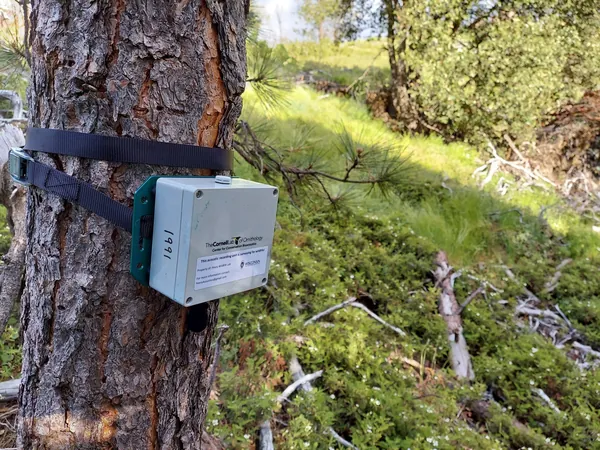
Revolutionary Study Reveals Monitoring Birds Could Save Entire Ecosystems!
2025-05-23
Author: Amelia
Unlocking Conservation Secrets: The Power of Bird Monitoring
In a groundbreaking study by researchers from the Cornell Lab of Ornithology, it has been revealed that keeping tabs on specific bird species can have profound benefits for a wider range of species inhabiting the same ecosystems. This research, featured in the journal *Conservation Biology*, scrutinized a staggering 892,000 hours of bird sounds from California's Sierra Nevada, putting a critical conservation strategy to the test.
The Umbrella Species Concept: A Game Changer for Conservation
The study focused on the umbrella species concept, which posits that safeguarding a few key species can provide insights and protection for entire communities. Lead author Kristin Brunk emphasized that while this assumption is often made, it has rarely been verified on such an extensive scale—until now.
Advanced Technology in Action
By utilizing sophisticated recording devices and artificial intelligence, the team examined the co-existence of six surrogate species—including the elusive California spotted owl and the black-backed woodpecker—alongside 63 other bird species across an expansive 25,000 square kilometers, nearly the size of Vermont. These particular species were selected for their unique habitat requirements that benefit a variety of other birds.
The California Spotted Owl: More Than Just a Bird
For instance, the presence of the California spotted owl is a strong indicator of mature forest habitats, which are becoming increasingly rare. Other species like the golden-crowned kinglet and the hermit warbler also thrive in these settings, suggesting that conserving the habitat of the spotted owl will indirectly support other bird populations.
The New Era of Conservation Science
Thanks to the advanced SwiftOne recording devices capturing bird sounds around the clock, and the BirdNET machine learning software identifying species from the troves of data, the team uncovered some eye-opening results. A remarkable 95% of the forest birds studied demonstrated positive associations with at least one surrogate species, indicating that managing forests for these birds could help in maintaining habitats for numerous other species.
Testing Assumptions: A Vital Step Forward
"This study is one of the first real evaluations of the umbrella species concept, which is a staple in conservation biology education," said Wood. They highlighted that the data enabled them to assess not just the efficacy of surrogate species, but how this effectiveness varied along the latitudinal gradient of the Sierra Nevada.
Geography Matters: Implications for Future Conservation
Interestingly, they discovered that the relationship between the surrogate species and other birds differed significantly between northern and southern regions of the Sierra Nevada. This finding is crucial—it suggests that strategies that work in one area may not translate elsewhere, emphasizing the need for tailored conservation efforts.
Choosing Wisely: The Key to Effective Conservation
Brunk concluded that selecting the right surrogate species is imperative. "A well-chosen surrogate species will be specialized enough to represent set conditions, creating a protective umbrella for other species," said Wood. This pivotal research opens new avenues for conservation strategies, ensuring a more holistic approach to ecosystem health.









 Brasil (PT)
Brasil (PT)
 Canada (EN)
Canada (EN)
 Chile (ES)
Chile (ES)
 Česko (CS)
Česko (CS)
 대한민국 (KO)
대한민국 (KO)
 España (ES)
España (ES)
 France (FR)
France (FR)
 Hong Kong (EN)
Hong Kong (EN)
 Italia (IT)
Italia (IT)
 日本 (JA)
日本 (JA)
 Magyarország (HU)
Magyarország (HU)
 Norge (NO)
Norge (NO)
 Polska (PL)
Polska (PL)
 Schweiz (DE)
Schweiz (DE)
 Singapore (EN)
Singapore (EN)
 Sverige (SV)
Sverige (SV)
 Suomi (FI)
Suomi (FI)
 Türkiye (TR)
Türkiye (TR)
 الإمارات العربية المتحدة (AR)
الإمارات العربية المتحدة (AR)